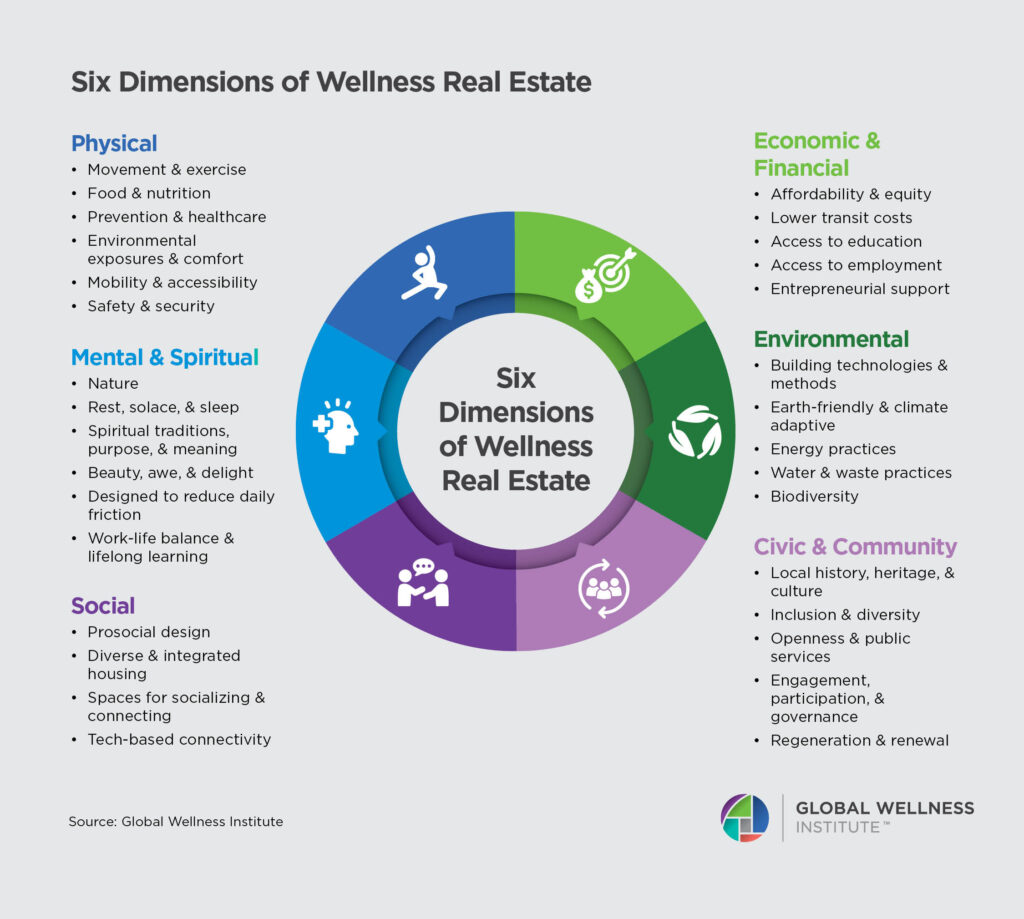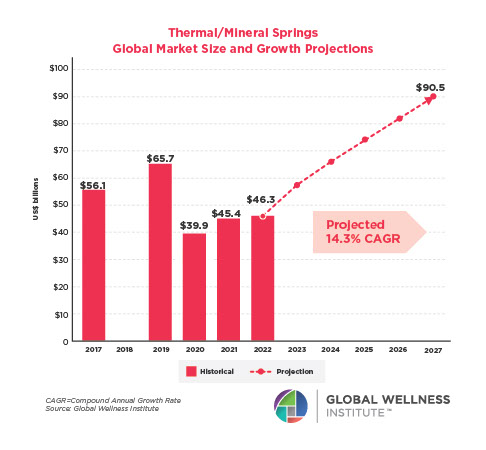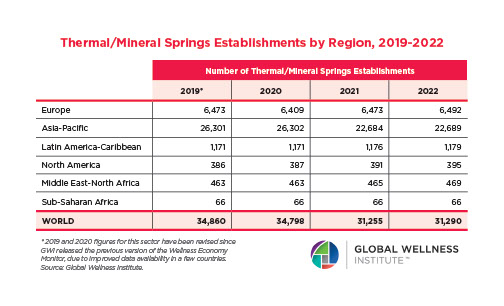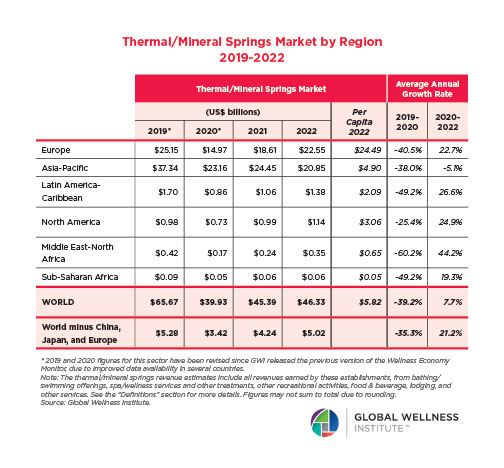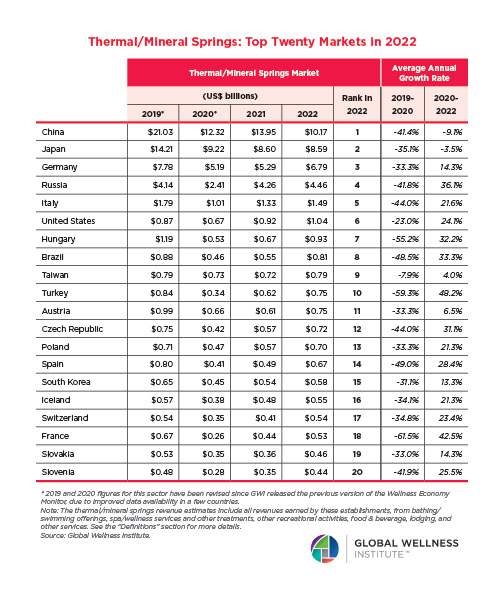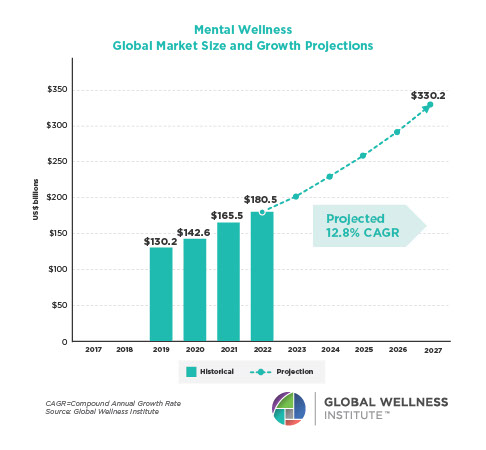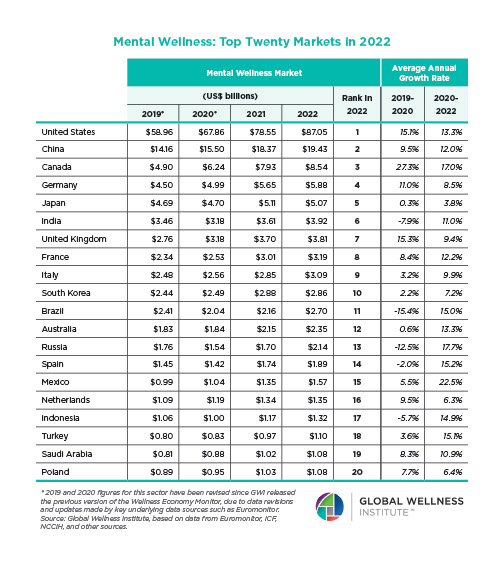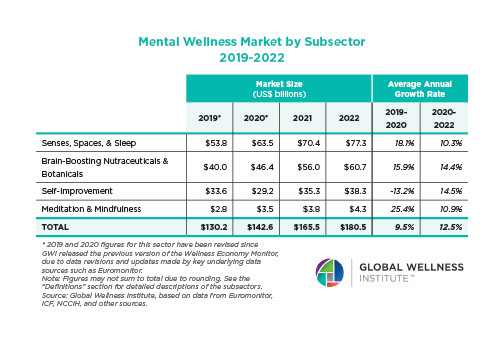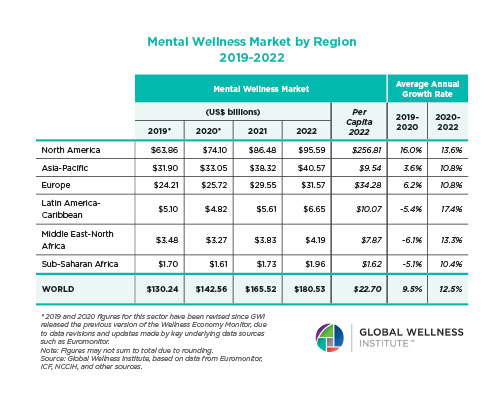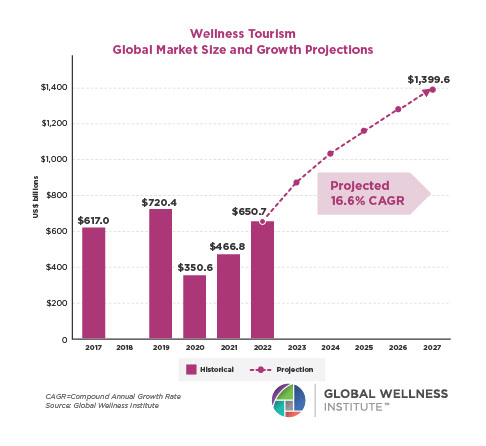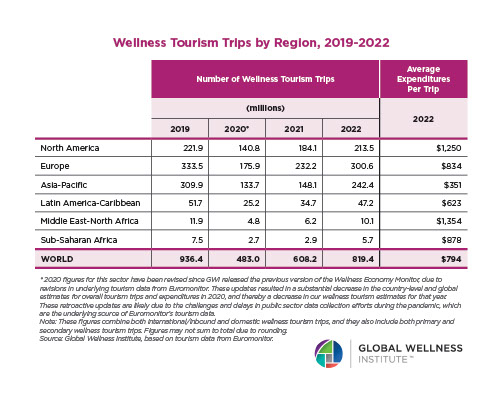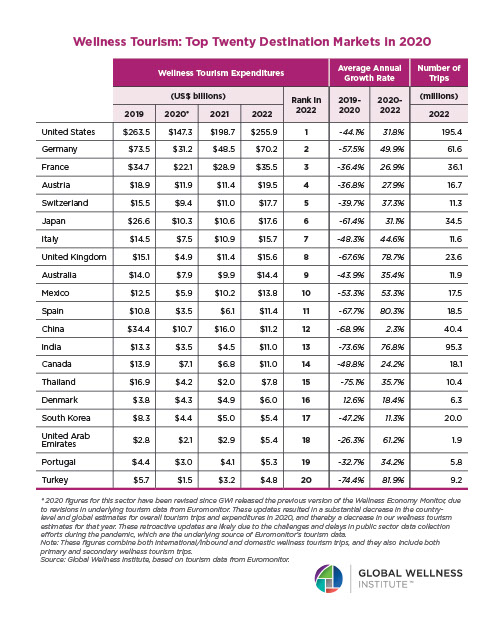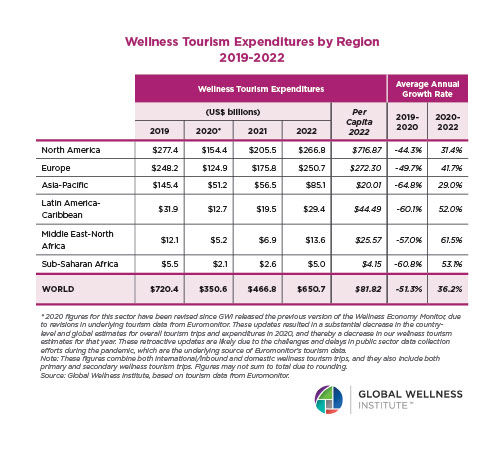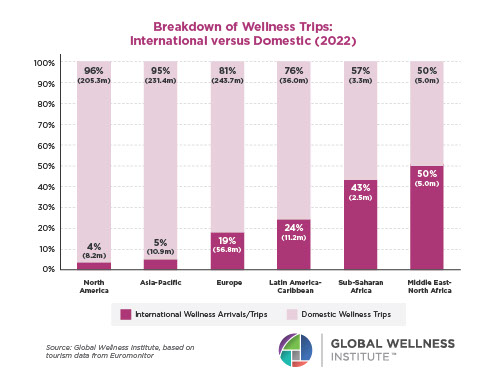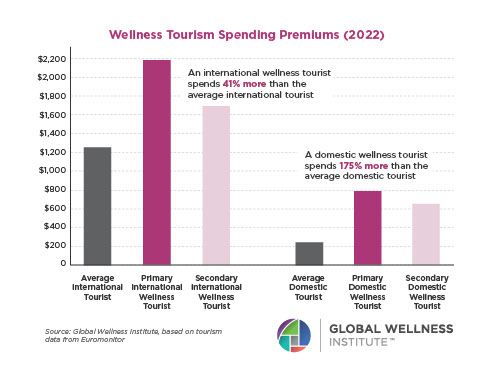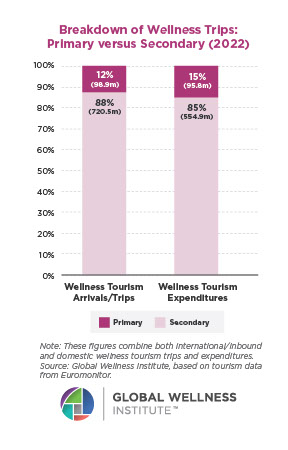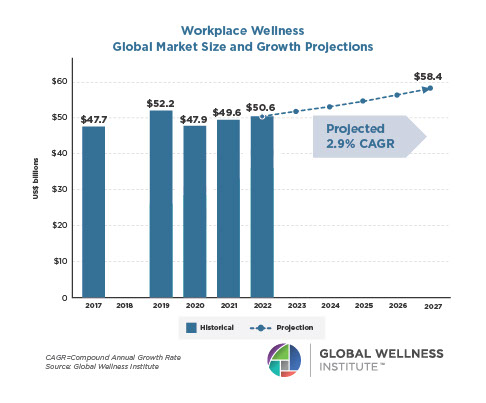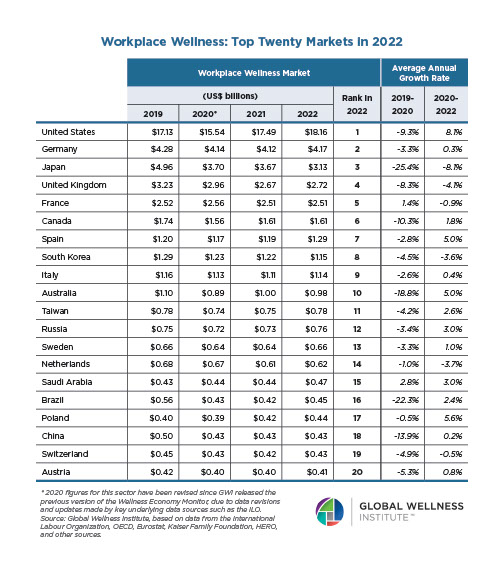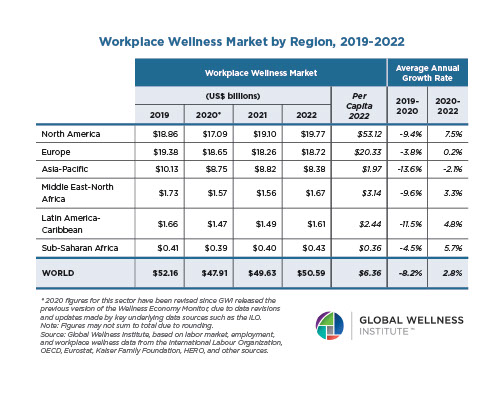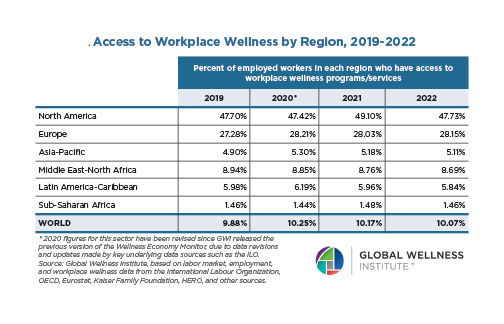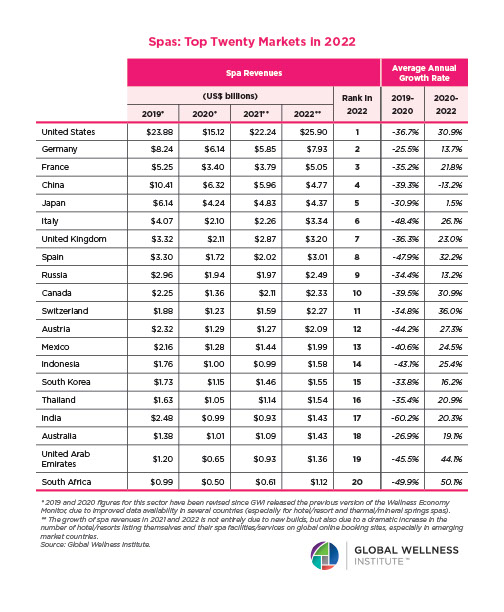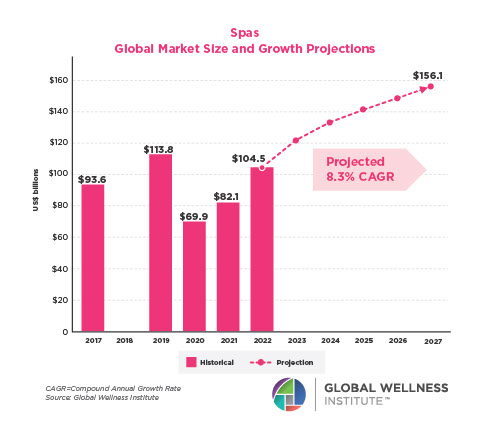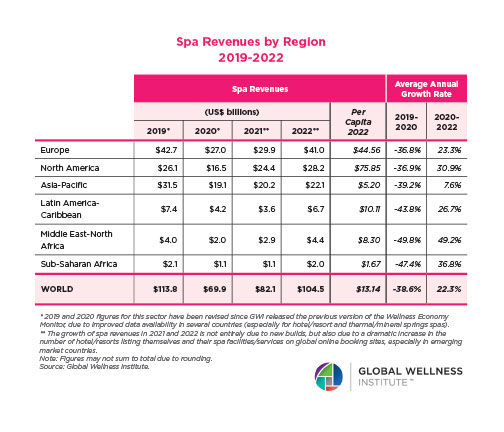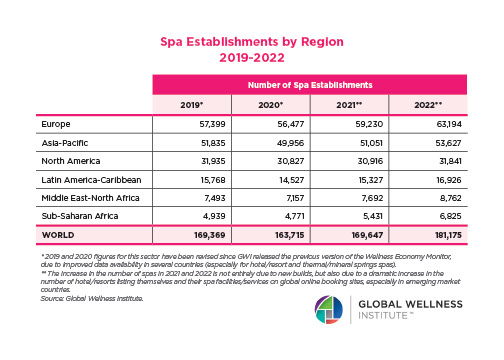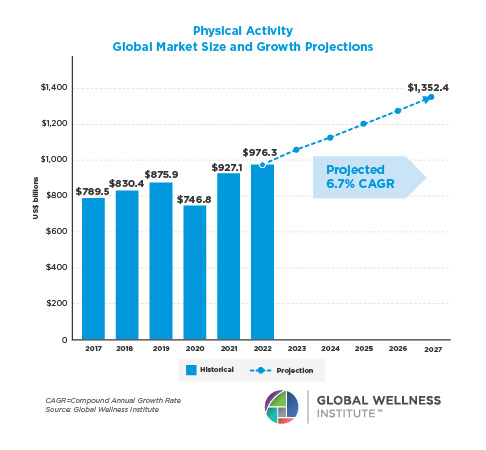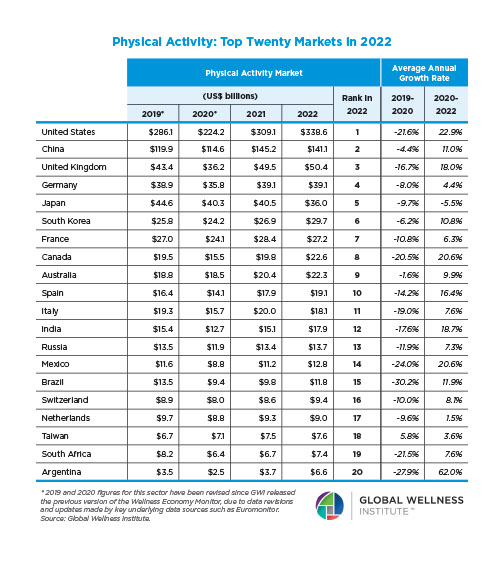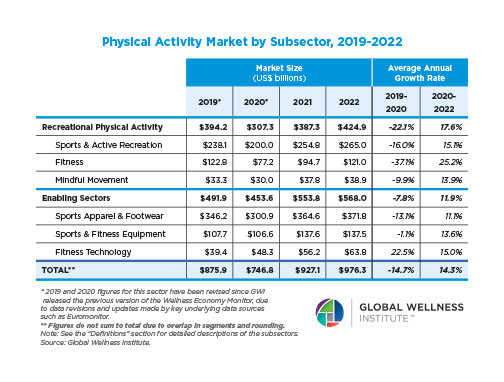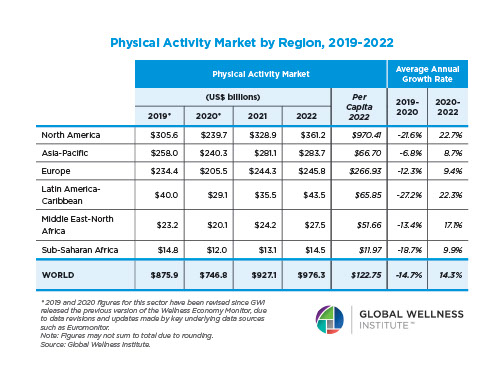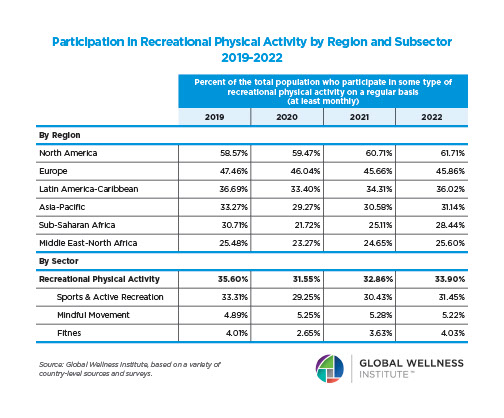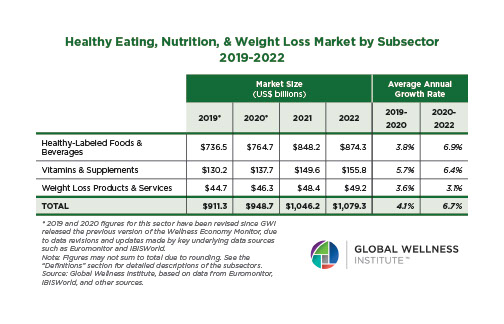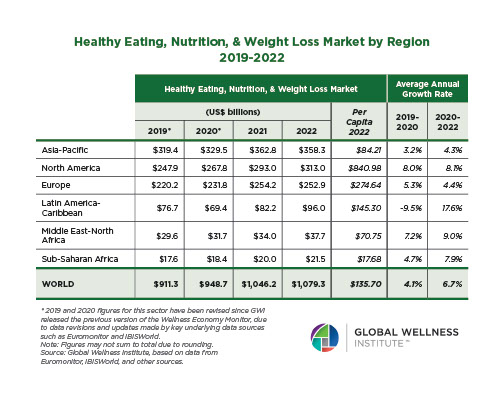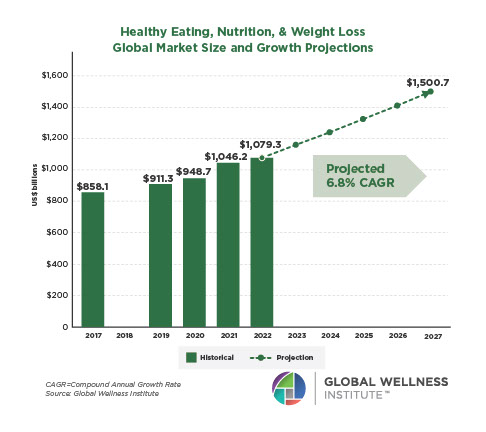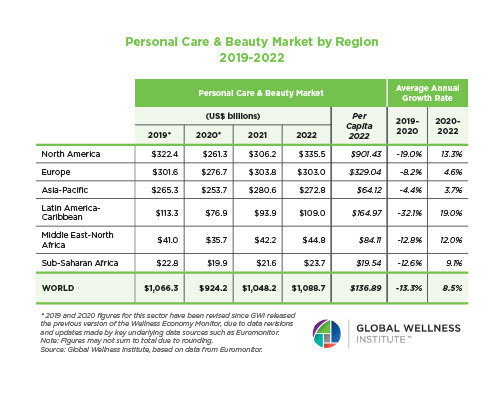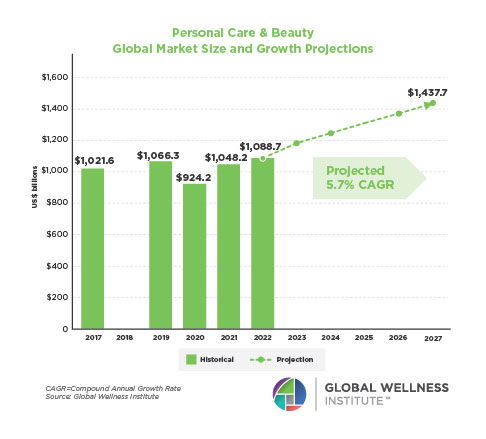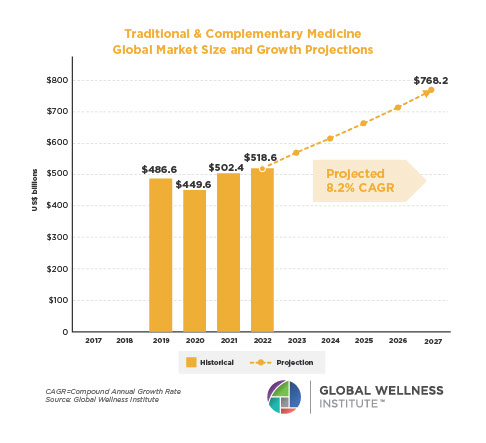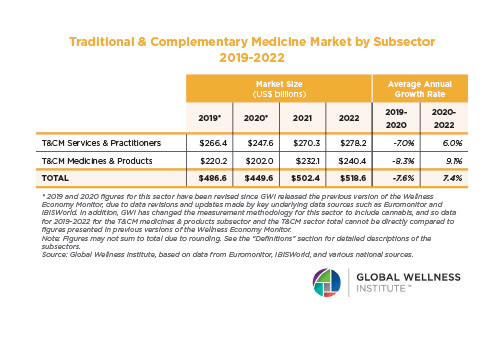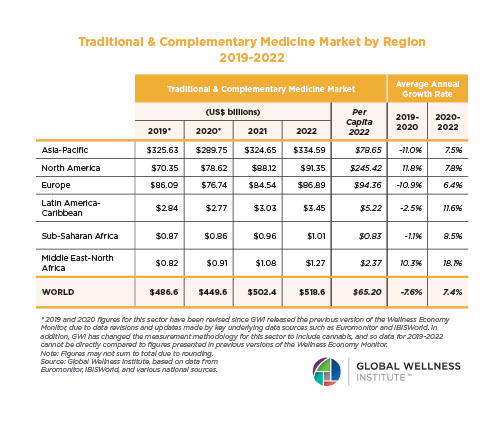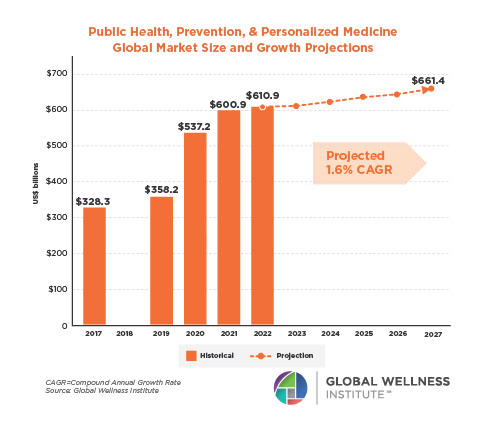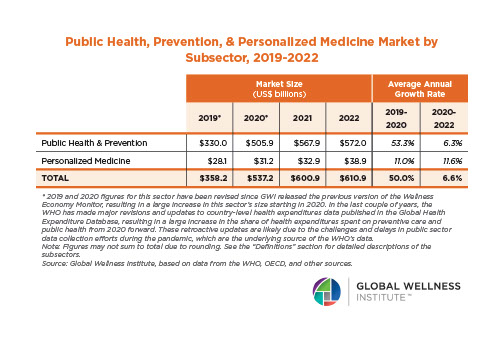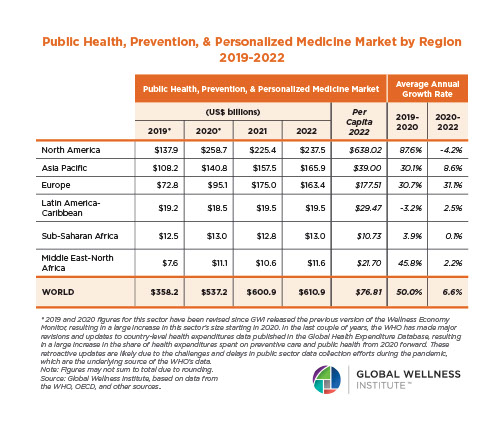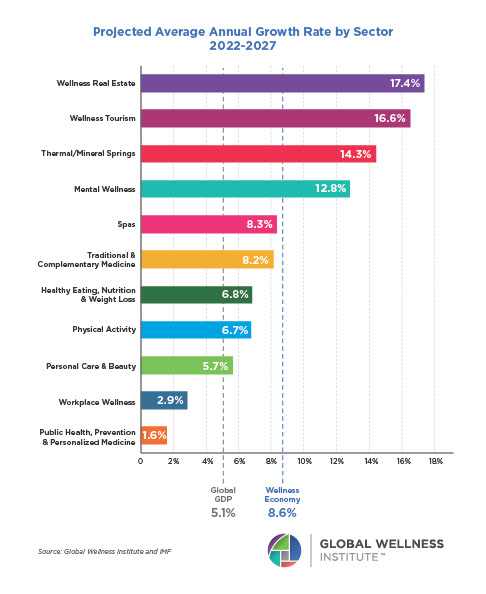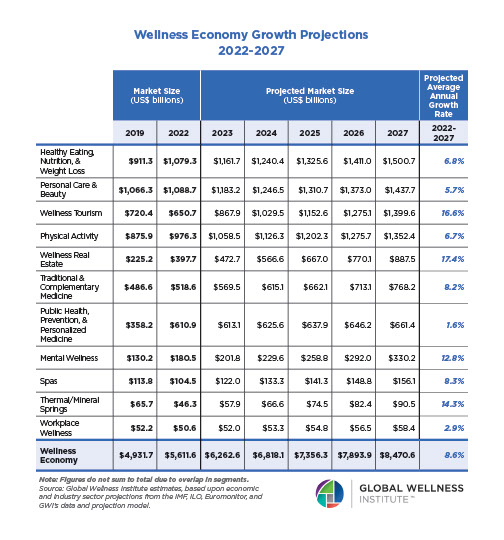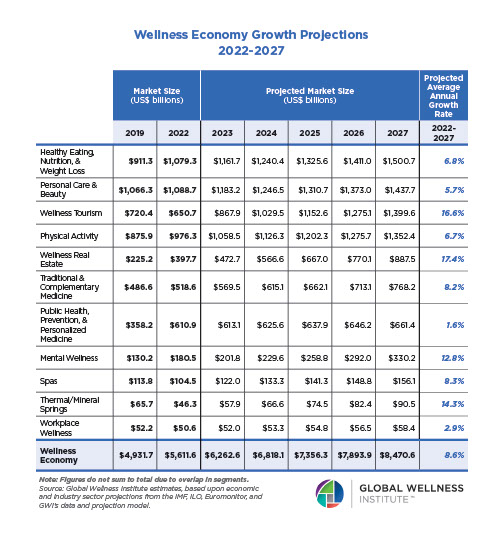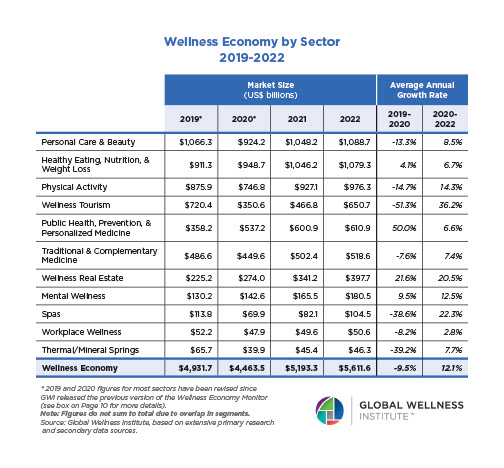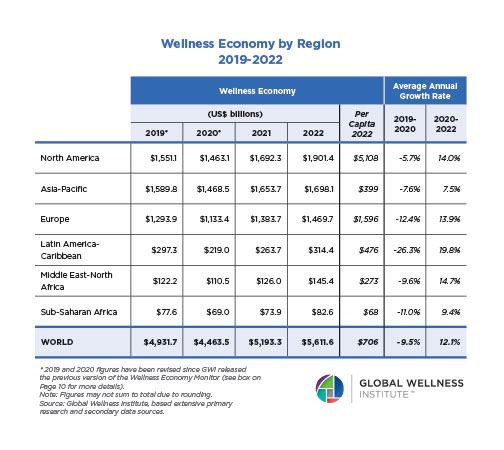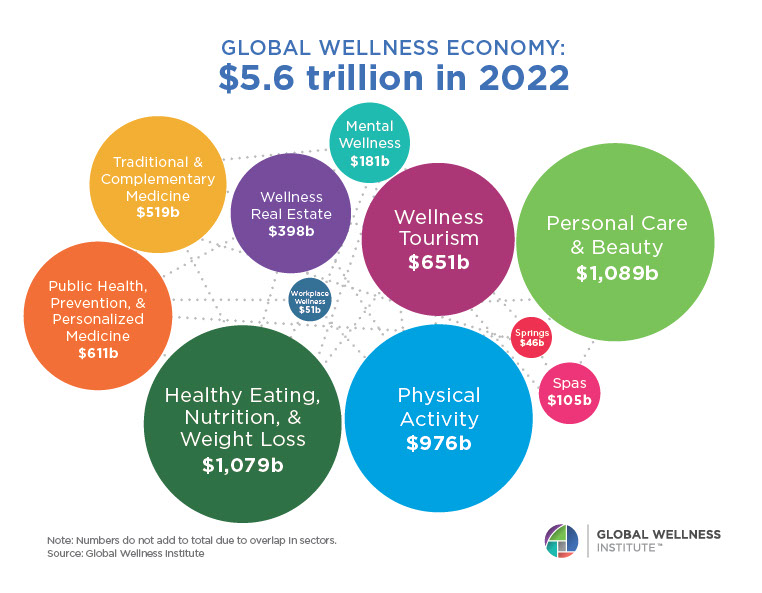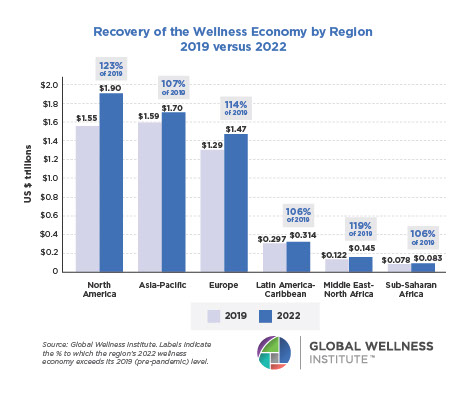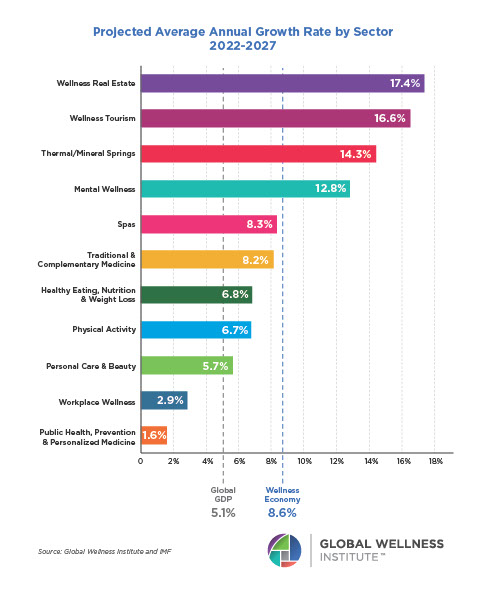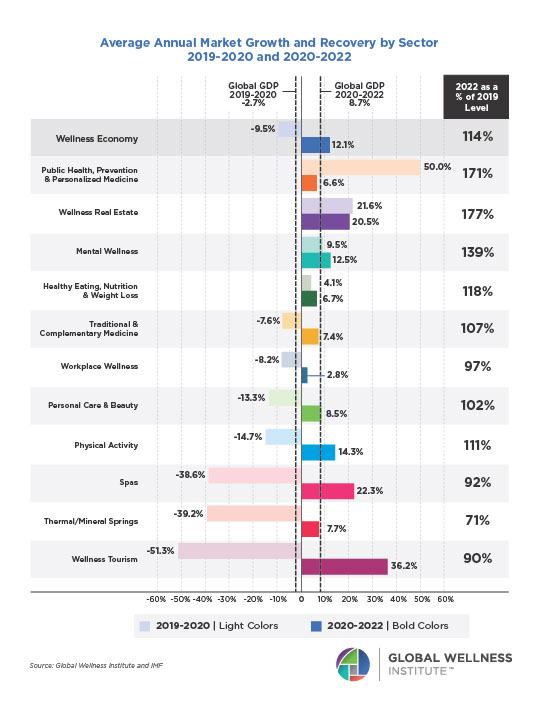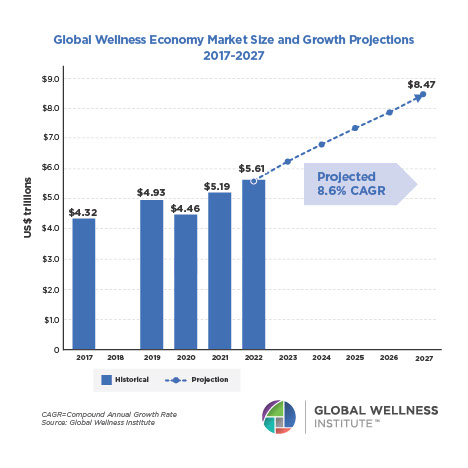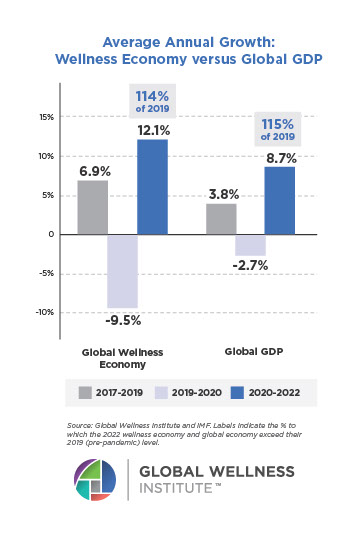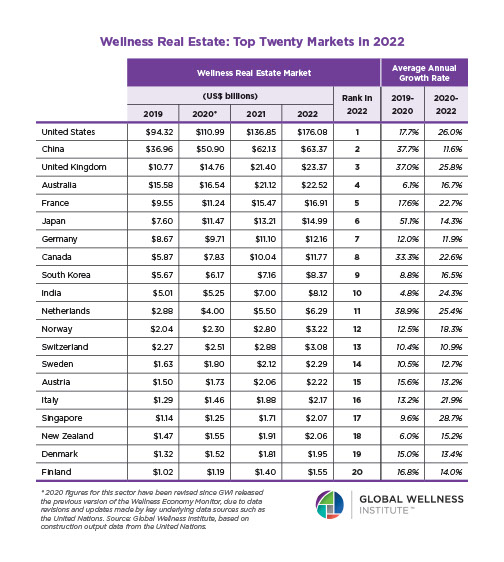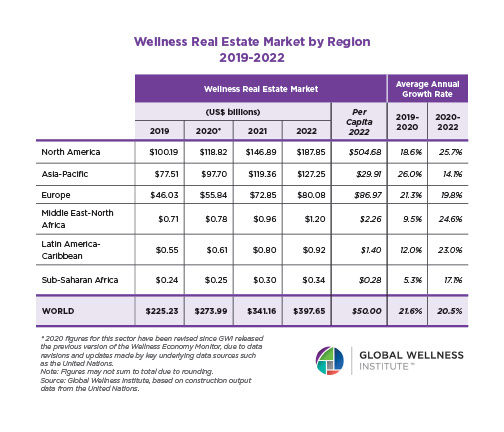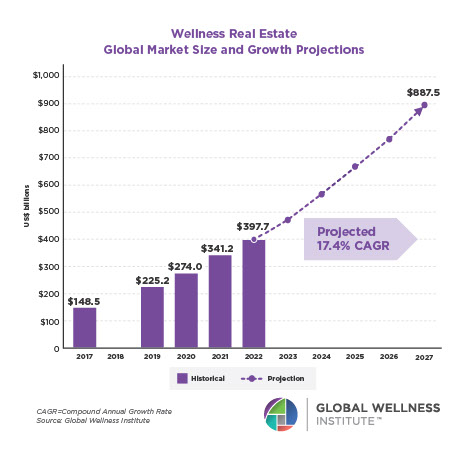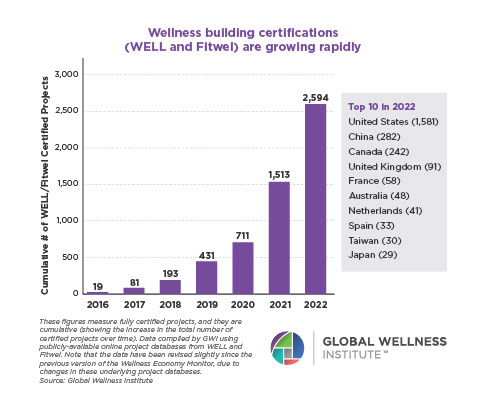WELLNESS REAL ESTATE
In 2018, the Global Wellness Institute (GWI) released Build Well to Live Well, a pioneering report that provided a unifying framework for defining wellness real estate, as well as the first-ever quantification of this market by regions and countries. Since then, wellness real estate has become the fastest growing sector within the global wellness economy.
Wellness real estate is poised to go from niche to mainstream. At the same time, many needs have yet to be addressed in the current market, including our rapidly changing demographics (aging populations, single person and shrinking households), our rising climate risks (wildfires, storms, floods, droughts, rising temperatures), our challenging economic realities (housing shortages, lack of affordability), and our increasing social disconnection (manifesting in civic disengagement). There is still a broad misconception that wellness real estate is the domain of luxury homes or hospitality-adjacent properties, or that it must include the latest “hot” amenities. While these misunderstandings persist, the sector will continue to encounter missed opportunities and unrealized potential.
GWI’s 2025 Build Well to Live Well research aims to support the industry and its stakeholders to prepare for the future of wellness real estate – where it can be implemented on any scale (from a single home to an entire neighborhood), can meet the needs of diverse residents/occupants, and can be delivered at many price points.
Why Does Wellness Real Estate Matter?
Our unhealthy built environments have a negative impact across every dimension of wellness.
The last hundred years have brought great advances in construction, engineering, city planning, and infrastructure. Science and technologies have enabled us to control infectious diseases and improve safety, while bringing ever greater levels of comfort, conveniences, entertainment, and telecommunications into our homes. Yet, our modern living environment has also created new health risks – sedentary lifestyles, lack of physical activity, poor diets, stress, social isolation, alienation, inequality, polluted environments, and climate change.
Research has shown that up to 80-90% of our disease risks, health outcomes, and longevity depend on environmental and lifestyle factors rather than our genes. Our health and well-being are intimately tied to where we live and how we live. And yet, when we look around, so much is unwell in our community environments. The ways our homes, offices, and neighborhoods have been planned, designed, and built over the last century have been reinforcing lifestyles that make us sick, stressed, alienated, and unhappy.
Many historical movements have laid the foundation for wellness real estate.
Today’s wellness real estate movement represents an important shift in focus that explicitly puts human health at the center of the conception, design, construction, and operation of our built environments. This movement has drawn from many past movements (see graphic below), integrating their best features through a multidimensional and holistic wellness lens. At the same time, new building/design standards focused on human health are spilling over from the commercial real estate space into the residential and hospitality sectors. As we look to the future, we can expect to see more creative blending of various elements from different movements, learning from recent past experiences and projects, smarter adaptions of human and planetary wellness features, and a mainstreaming of wellness real estate that will benefit an increasingly broader population.
Investment in real estate should be an investment in wellness.
The Global Wellness Institute believes that the built environment is the next frontier and greatest future opportunity for wellness. Our built environments have a profound influence on our health and well-being (an impact that is often negative), and these impacts have become more obvious since the COVID-19 pandemic. The rise of wellness as a dominant consumer value is driving trillions of dollars of spending across every product and service category. Worldwide, nearly 15% of GDP (or over $16.5 trillion in 2024) is spent on construction every year, building our workplaces, homes, schools, hospitals, roads, and infrastructure. Housing is one of the largest household expenditures worldwide (representing about 20% of all global consumer spending, or $12 trillion in 2024) in addition to being our biggest financial investment. It is only logical that what we build should also be an investment in our health and well-being.
What is Wellness Real Estate and How Do You Build It?
Defining Wellness Real Estate.
The Global Wellness Institute defines wellness real estate as: built environments proactively designed, built, and operated to support the holistic health of occupants, visitors, and the community.
Six Dimensions of Wellness Real Estate.
Wellness real estate projects must be designed and built in a manner that facilitates and optimizes their occupants’ health and well-being across multiple dimensions of wellness. Many different design features, infrastructure, amenities, and services can be used to support each dimension.
Six Guiding Principles for Wellness Real Estate.
We outline six key principles that can be used to guide the development of wellness real estate from the ground up. These principles encourage developers and builders to think holistically about how health and wellness can be addressed and supported across every aspect of the development process.
1. From small to large scale: Wellness can be incorporated into any size, scale, and type of building or project, and at any price point.
2. From intentional to multidimensional: Wellness real estate should be intentional, starting at the early stage of the planning process; it should use a multidimensional and holistic approach.
3. From “do no harm” to optimizing wellness: Our built environments should not be unhealthy or unsafe; they can also leave us feeling better than before we entered them.
4. From passive to active wellness: Our built environments can affect our health simply by existing within a space; they can also encourage the proactive behaviors that drive wellness.
5. From infrastructure to operations: Wellness should be embedded in the infrastructure and not just an amenity; it should also be activated through ongoing operations and programming.
6. From “me” to “we”: Apart from catering to individual wellness needs, wellness real estate recognizes that connections and community are central to our well-being.
Making the Case for Wellness Real Estate.
The Wellness Case.
The built environment is an essential foundation for building healthy lives. At its best, wellness real estate can minimize the environmental impacts on our health, support healthier behaviors and lifestyles, and improve access to wellness infrastructure for the most vulnerable populations. Occupants of wellness real estate projects have reported many positive impacts, including: more physical activity, better sleep, lower rates of chronic disease, reduced hospital admissions, reduced symptoms of asthma, reduced sick days at work, lower crime rates, more time spent in nature, improved self-reported well-being, better memory and cognitive function, more interactions with neighbors, and a greater sense of belonging and connection.
The Business Case.
Wellness real estate not only improves its occupants’ health and well-being, but is also good for the bottom line. Developers, investors, owners, consumers, and occupants have demonstrated a strong interest in wellness real estate and the willingness to pay for it. Wellness-focused residential properties can command a price premium of 10-25% (for properties positioned at the middle and upper ends of the market, based on GWI analysis), while commercial buildings have demonstrated a 4.4-7.7% rental premium per square foot (based on data from MIT). For most developers and companies, the motivation for and value of investing in wellness real estate comes not from short-term financial payoffs, but rather from the intangible, longer-term market value of “doing the right thing” for occupants/users. Many other economic benefits have been documented by wellness real estate projects, including: faster sales, longer leasing terms, lower turnover, higher tenant/resident satisfaction, and higher asset values. In commercial real estate, wellness features support higher employee productivity and performance; reduced absenteeism and presenteeism; and improved retention and recruitment.
For more information:
- GWI’s 2025 report, Build Well to Live Well: The Future is a full update of our pioneering 2018 report. This report is an in-depth exploration of the real estate market and a valuable reference guide for the real estate and building industry. It provides a deep dive into why we need more wellness real estate, how to build it, and how to communicate its health and economic benefits. It also explores twelve important future opportunities for the market, with dozens of project examples.
- A 2025 companion report, Build Well to Live Well: Case Studies, Volume 1, showcases thirteen properties across the United States and the United Kingdom, to illustrate how – with intention and thoughtful planning – wellness can be embedded in projects of any size, at any price point, and for any type of occupants.
- GWI’s 2018 report, Build Well to Live Well, is the first research to size and analyze the global and regional wellness lifestyle real estate and communities market. The report articulates their potential impacts on our health and wellbeing, as well as the compelling business case for investing in them. It provides a guide, along with useful tools and resources, for conceptualizing, planning, designing, and building wellness lifestyle real estate in a holistic and intentional manner.
- GWI’s 2020 White Paper, Resetting the World With Wellness: Healthy Built Environments for Healthy People, describes how our unhealthy built environment can cause both chronic and infectious diseases like COVID-19, and it elaborates the roles that communities, businesses and governments can play in building healthier homes and communities for healthier people.
- GWI’s wellness real estate figures are also updated and released every few years in the Global Wellness Economy Monitor. For the most recent data and research, see Wellness Economy Data Series.
- Additional information and resources are available through two GWI initiatives: Wellness Communities & Real Estate Initiative and Wellness Architecture & Design Initiative.


